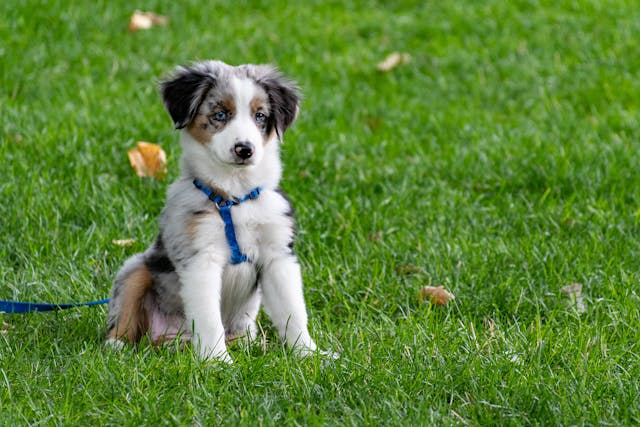Have you ever felt frustrated with your dog harness slipping, rubbing, or just not doing the job when you’re out for a walk? If you’re looking for a high‑quality mesh dog harness that really supports both your dog’s comfort and your peace of mind, you’re in the right place. In this blog, we’ll walk through the key features you need to check, so whether you’re just browsing or ready to buy, you’ll feel confident. Let’s jump in.
Why a Mesh Dog Harness Makes a Difference?
Choosing a mesh dog harness changes more than just the look of your dog’s gear. A good mesh harness offers better ventilation and comfort, particularly if your dog gets warm easily or tends to pull. It can reduce chafing and allow more movement. If you’ve ever felt like the standard flat harness just didn’t cut it, a mesh version might solve that problem. You’ll notice the difference on those longer walks or summer outings.
1. Fit and adjustability
Let’s talk about one common pain point: ill‑fitting harnesses. Whether your dog is a compact terrier or a lanky retriever, the right mesh dog harness should allow a snug fit without being restrictive.
Make sure the chest and girth straps adjust easily. If a harness only fits one shape, you’ll likely end up with discomfort or escape moments.
Check for step‑in designs or easy buckles so you’re not wrestling your dog into the harness every time.
Look for straps that stay in place even when your dog moves or pulls; frequent re‑adjusting is annoying and unsafe.
A good fit means you can insert two fingers under the strap and that it doesn’t shift as your dog walks, plays, or explores.
2. Quality of mesh material and breathability
Since you’re focusing on a mesh dog harness, the material matters a lot. Mesh isn’t just about style, it’s about practicality.
A strong breathable mesh material helps in several ways:
- Keeps your dog cooler during warm walks or active sessions
- Lets moisture and heat escape rather than trapping them under the harness
- Reduces risk of chafing and skin irritation
For example, some harnesses use air‑mesh nylon fabric that stays in place and is soft on your dog’s fur.
If you’ve ever felt your dog panting excessively or pausing mid‑walk because of heat, you’ll appreciate mesh ventilation.
3. Safe hardware and leash attachment points
Another major concern: safety. What good is a beautifully comfortable mesh dog harness if the hardware fails or the leash ring is in a poor place?
Here’s what to check:
- Durable D‑ring(s) for leash attachment that won’t bend or break
- Secure buckles or locking mechanisms. Some models even offer four‑point locking systems for extra peace of mind.
- Well‑placed leash ring: If your dog pulls, a front‑clip or dual‑clip option may give you better control.
- Reinforced stitching and quality fasteners. Cheap hardware means you’ll have to replace the harness early.
4. Comfort, padding, and ease of wear
Your dog’s comfort should be the top priority. A mesh dog harness may look great, but if the straps dig in or the fit is awkward, it won’t get used.
Consider the following:
- Soft piping or padding around the chest and shoulders. These areas bear the most pressure.
- Smooth edges and no hard seams where the mesh meets the straps.
- A harness that’s easy to put on and take off. You’ll both prefer doing the walk rather than fussing with gear.
- A design that doesn’t interfere with your dog’s natural movements — walking, trotting, playing.
5. Visibility, durability, and usability in everyday life
You’ll also want features that support the everyday realities of dog walking — early mornings, evenings, muddy parks,and weather changes.
Here are features to look for:
- Reflective strips or bright contrasting colours in a mesh dog harness for visibility in low light or dusk walks.
- Easy‑clean materials. Mesh should stand up to being rinsed or washed without collapsing or losing shape.
- Durable enough to handle tugging, grass, branches, and general outdoor wear. A good harness will last much longer than one that looks good but falls apart.
- Comfort in different climates: Even when it’s hot or humid, a well‑ventilated mesh design helps. On cooler days, it still offers protection without becoming unnecessary bulk.
6. The right style and matching your dog’s lifestyle
Your dog’s lifestyle matters when you pick a harness. Are you walking ten minutes around the block or heading for long hikes? Do you have a puppy who’s still learning or a mature dog who prefers a stroll?
- For active dogs: look for mesh dog harness designs with front clip options for extra control and strong hardware for pulling.
- For everyday city walks: an easy‑on design, light mesh, and simple back clip harness may suffice.
- For dogs that pull or get distracted: look for mesh dog harnesses with control features and ergonomic fit.
No matter your stage in the buying funnel, just browsing, ready to buy, or somewhere in between, selecting the right style makes a real difference in how much you and your dog enjoy your time together.
7. Budgeting and long‑term value
You may worry: “How much should I spend?” Quality mesh dog harnesses cost more than basic ones, but they offer long‑term value.
Think about:
- How often you’ll use it and in what conditions. If it’s every day, investing in quality pays off.
- Size availability: Will your dog grow (puppy) or change (senior dog)? A harness you can adjust gives more value.
- Return or exchange policies. A harness that doesn’t fit well is just a waste.
By focusing on long‑term value rather than just upfront cost, you’ll end up with a harness that serves you both well.
Conclusion
At the end of the day, choosing the right mesh dog harness comes down to comfort, control, and safety. If the harness fits well, is breathable, easy to put on, and holds up to daily use, you’re on the right track.
Look at how your dog walks, how much they pull, and what features would make things easier for both of you. So, take a few minutes, check the key features, and pick the harness that actually works for your dog and for you.




